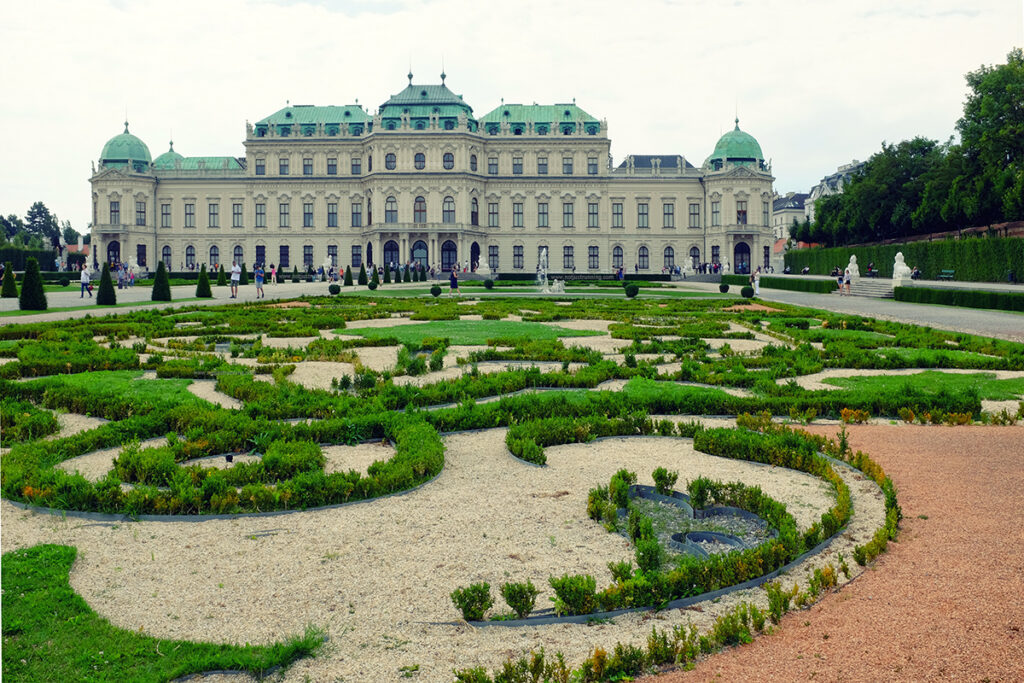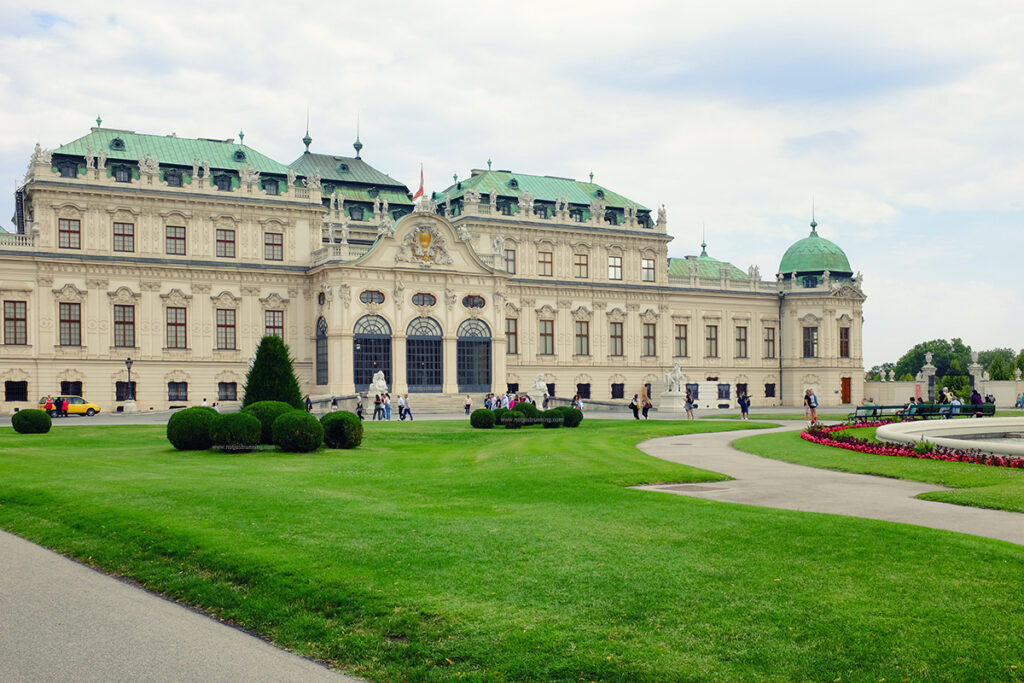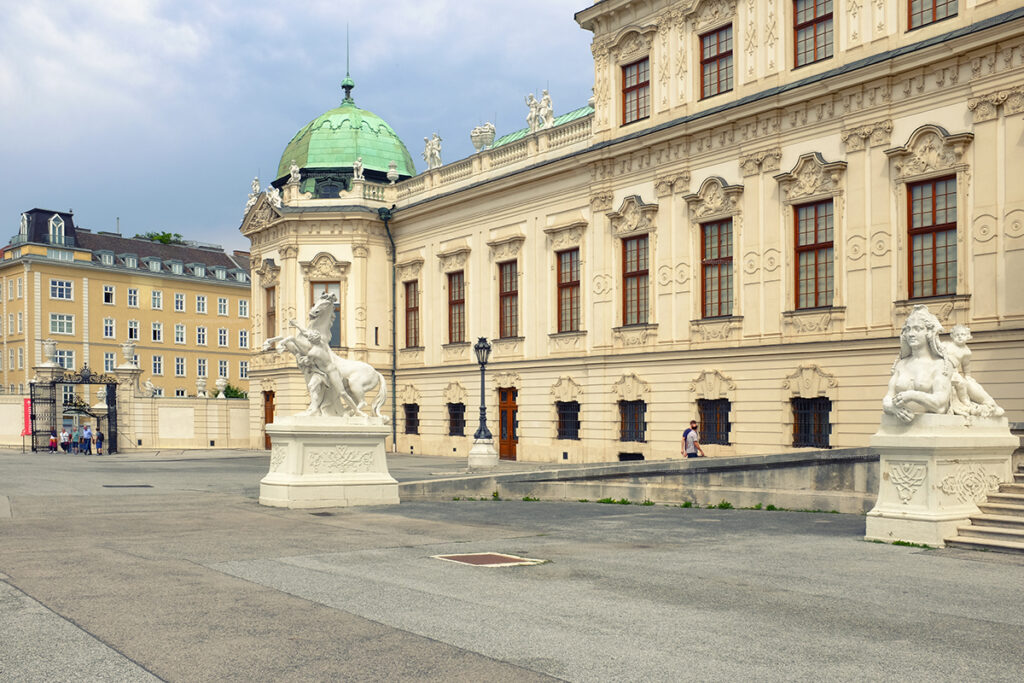History and Art Unite at Austria’s Iconic Landmark

Nestled in the heart of Vienna, Austria, the Belvedere Palace stands as a testament to Baroque architecture, rich history, and world-renowned art. Comprising two magnificent palaces—the Upper Belvedere and the Lower Belvedere—this iconic landmark attracts millions of visitors each year. It is not only a symbol of Austria’s imperial past but also a vibrant cultural hub showcasing some of the most famous artworks in history, including Gustav Klimt’s “The Kiss.”
The History of Belvedere Palace
Commissioned by Prince Eugene of Savoy, one of the most successful military commanders in Austrian history, the Belvedere Palace was constructed in the early 18th century. Designed by the renowned architect Johann Lukas von Hildebrandt, the palace was intended as a summer residence for the prince. Its strategic location on a gentle slope provided breathtaking views of Vienna, hence the name “Belvedere,” which means “beautiful view” in Italian.
Prince Eugene of Savoy: The Visionary Behind the Palace

Prince Eugene’s vision for the Belvedere was grandiose. As a patron of the arts and a lover of architecture, he sought to create a space that reflected his status and tastes. The palace complex was more than just a residence; it was a statement of power and sophistication.
Architectural Splendor of the Belvedere Palace
The Belvedere Palace is a quintessential example of Baroque architecture, characterized by its ornate details, grand staircases, and symmetrical gardens. The complex consists of two main buildings—the Upper Belvedere and the Lower Belvedere—connected by an expansive French-style garden.

The Upper Belvedere
The Upper Belvedere is perhaps the most famous part of the complex. Completed in 1723, it was originally designed to host grand receptions and events. Today, it houses the Belvedere Museum, home to Austria’s largest collection of art, including works from the Middle Ages to contemporary pieces.
The façade of the Upper Belvedere is adorned with intricate sculptures and decorative elements that exemplify Baroque artistry. Inside, visitors can marvel at the opulent Marble Hall, with its stunning frescoes and elaborate stucco work.
The Lower Belvedere
The Lower Belvedere, completed in 1716, served as Prince Eugene’s living quarters. It features more intimate and personal spaces, including the lavish Marble Gallery and the Golden Room, both showcasing the prince’s exquisite taste.
The Orangery and the Palace Stables, also part of the Lower Belvedere, now host temporary exhibitions and contemporary art installations, adding a modern twist to this historic site.
The Gardens of Belvedere Palace
The gardens of Belvedere Palace are a masterpiece in their own right. Designed in the French formal style, they feature symmetrical layouts, meticulously trimmed hedges, and ornate fountains. The gardens are divided into three levels, each offering a unique perspective of the palace and its surroundings.

Strolling through the gardens, visitors can enjoy the serene atmosphere, stunning floral displays, and impressive sculptures that line the pathways. The reflective pools add a touch of tranquility, mirroring the grandeur of the palaces.
The Belvedere Museum: A Treasure Trove of Art
The Belvedere Museum is one of Vienna’s most important cultural institutions. It boasts an extensive collection of Austrian art, with a particular focus on the works of Gustav Klimt, Egon Schiele, and Oskar Kokoschka.
Gustav Klimt and “The Kiss”
One of the main attractions of the Belvedere Museum is Gustav Klimt’s “The Kiss.” This iconic painting, created during Klimt’s “Golden Phase,” is celebrated for its intricate patterns, use of gold leaf, and romantic subject matter. “The Kiss” is considered a masterpiece of early 20th-century art and draws countless visitors eager to witness it in person.
Other Notable Collections
In addition to Klimt, the museum features works by other prominent artists such as Egon Schiele, known for his expressive and often controversial pieces, and Oskar Kokoschka, whose works reflect the turbulent times of early 20th-century Europe.
The museum’s collection spans various periods, from medieval art to contemporary pieces, offering a comprehensive overview of Austria’s rich artistic heritage.
Visiting Belvedere Palace

Opening Hours and Tickets
Belvedere Palace is open year-round, with varying hours depending on the season. It’s advisable to check the official website for the most up-to-date information on opening times and ticket prices. Visitors can purchase tickets for the Upper Belvedere, Lower Belvedere, or a combined ticket for access to both.
Guided Tours and Events
For those interested in a deeper understanding of the palace’s history and art collections, guided tours are available. These tours provide fascinating insights into the lives of Prince Eugene, the artists featured in the museum, and the architectural significance of the palace.
Belvedere Palace also hosts a range of events throughout the year, including art exhibitions, concerts, and cultural festivals, making it a dynamic destination for visitors of all ages.
Accessibility and Amenities
The palace complex is accessible to visitors with mobility impairments, with ramps and elevators available. On-site amenities include cafes, gift shops, and restrooms, ensuring a comfortable visit for all.
Belvedere Palace Should Be on Your Travel Itinerary

Belvedere Palace is more than just a historical site; it’s a cultural experience that offers a glimpse into Austria’s imperial past and artistic achievements. Whether you’re an art lover, history enthusiast, or architecture aficionado, the palace provides a rich and rewarding experience.
Experience the Magic of Belvedere Palace
A visit to Belvedere Palace in Vienna is a journey through time, art, and architectural beauty. From the grandeur of the Baroque buildings to the serene elegance of the gardens and the inspiring art collections, every aspect of the palace tells a story of Austria’s rich cultural heritage.
Make sure to include Belvedere Palace on your Vienna itinerary—it’s an unforgettable destination that captures the essence of Austrian history and artistry.